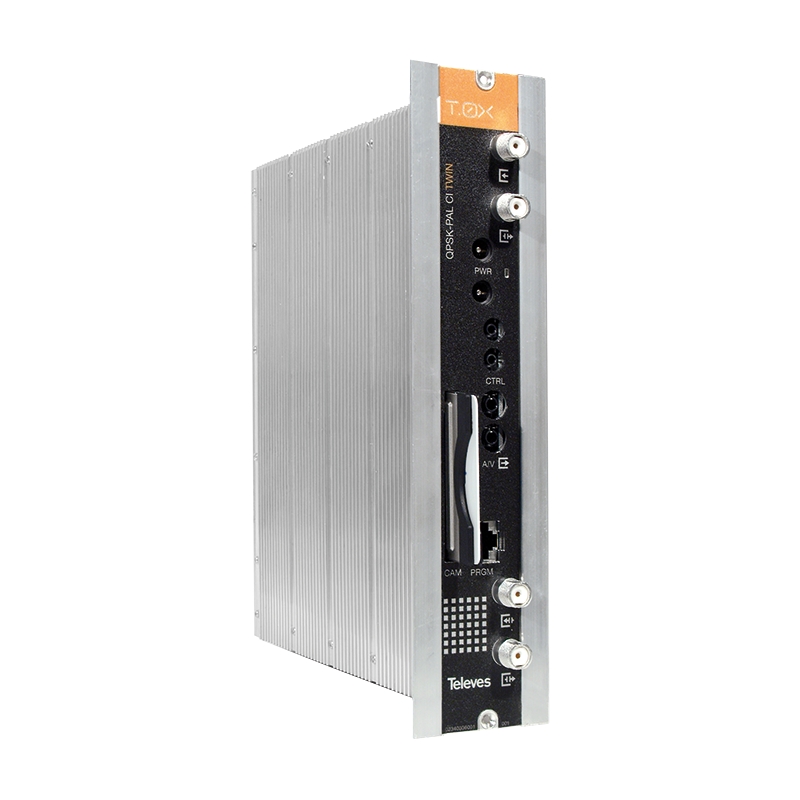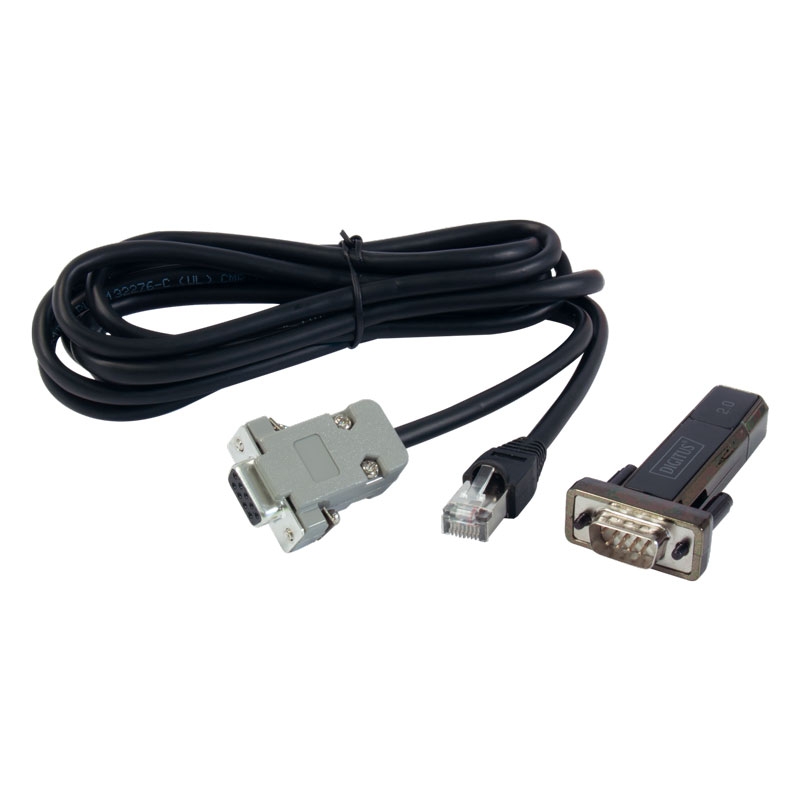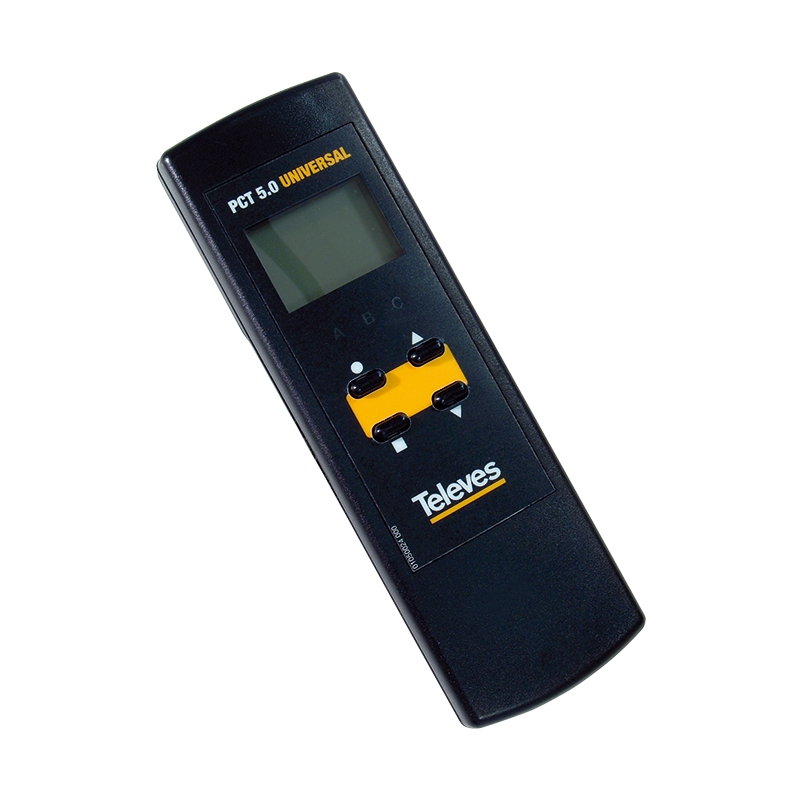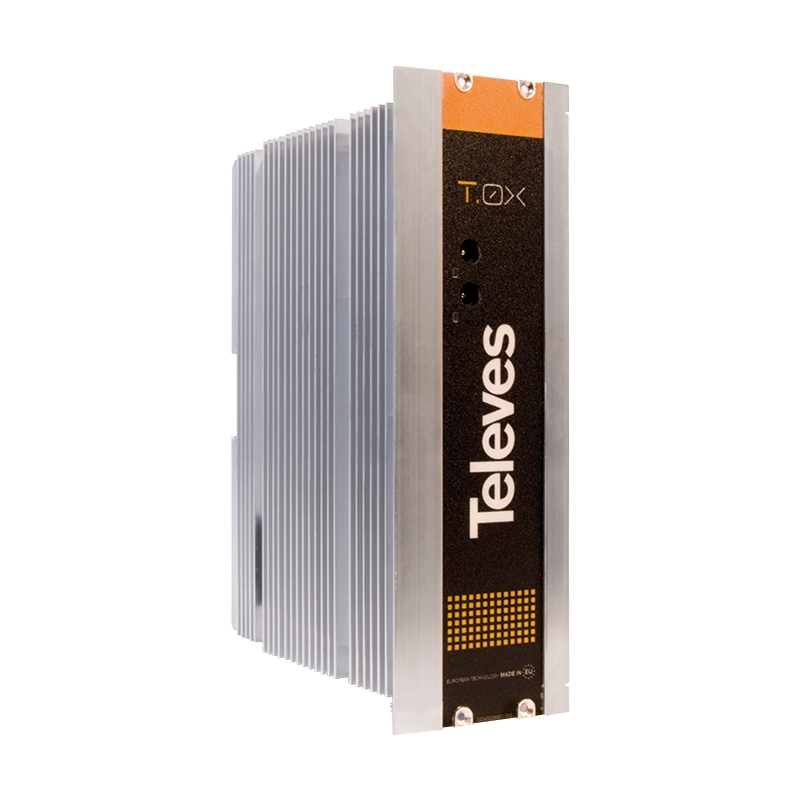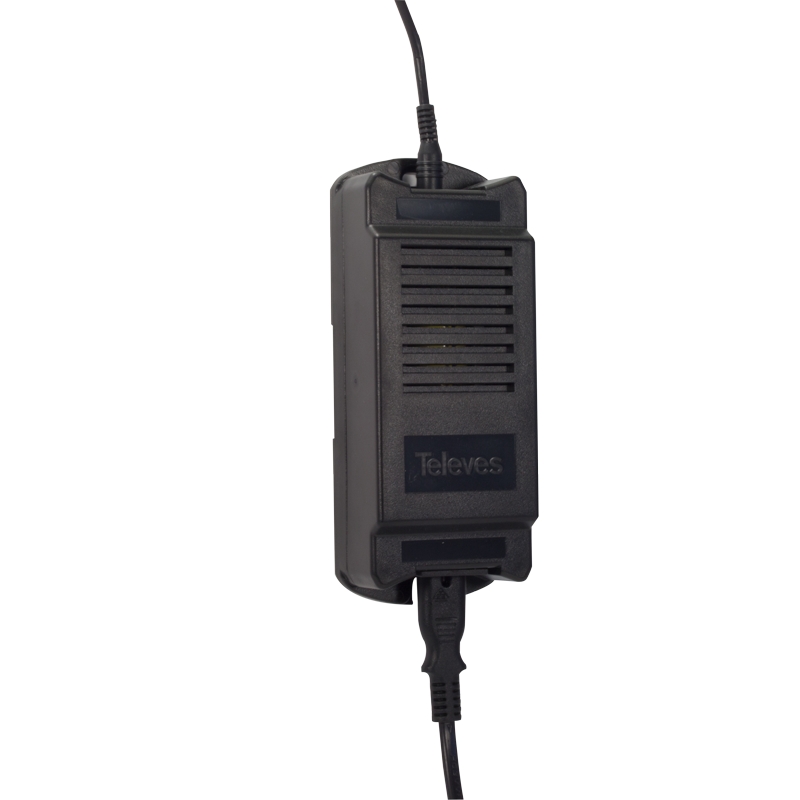Product description:
The unit allows access to scrambled services by using a conditional access module (CAM) that performs the services descrambling. Descrambling is only allowed for the module B. The selection of parameters (input frequency, SR, output level, output frequency, ...) is performed by using the programmer ref. 7234, which is plugged in its own socket on the front of the unit. It is also possible to control the unit from a PC as
described in Section 6. The normal operation of modules is as follows: - Module A: All changes are made and/or
previewed in real time, except for some cases to be discussed in the corresponding section. - Module B: To make and/or preview changes in real time, you have to save them (long press on key ), except for some cases to be discussed in the corresponding section.
The TWIN QPSK-PAL CI unit allows the user trasmodulate two channels (TV or radio) selected from those in two satellite transponders in the same band and polarisation, into two VHF/UHF PAL channels, with the possibility of stereo modulation. To do this, the unit demodulates the two QPSK input channels (transponders) to obtain the
MPEG-2 TS signal (Transport Stream MPEG-2) for each of the input channels to carry out the subsequent modulation of both audio and video signals of the selected program, to any channel or frequency between 46 and 862MHz.
The TWIN QPSK-PAL CI unit features:
- An IF loop-through for the input connectors on the top of its front, in order to enable the passage of the input signal to other modules. On the other hand, allows current by-pass through the IF input cable (13 or 17 Vdc) to power the LNB as well as to generate and send out a 22KHz tone through this input to select the LNB oscillator.
- A RF loop-through for the output connectors on the bottom of its front, in order to mix the channels for further amplifi cation.
- A slot for inserting a conditional access module (CAM) for the module B of the TWIN unit.
- Two 2.5 mm jack connectors used to connect the headend controller CDC T-0X via a control BUS.
- Two 3.5 mm jack connectors that make available in baseband the two audio & video channels of
each module.
Technical features:
QPSK Demodulator
- LNB Powering (1unit) 13/17V (±0.5 V) / OFF 22KHz (±2KHz) (Select. ON/OFF) Input VSWR (75 ohm) > 7 dB (950 - 2150 MHz) Input symbol rate 2 - 42,5 Mbaud
- Input through losses < 1.5 dB (950-2150 MHz) Capture range ± 960 ppm
- Input frequency 950 - 2150 MHz Roll-off factor 35%
- Frequency steps 1 MHz Convolutional code 1/2, 2/3, 3/4, 5/6, 7/8
- Locking margin ± 1 MHz (<5 Mbaud) ± 2 MHz (5-10 Mbaud) ± 5 MHz (>10 Mbaud) Descrambling TS300421 Deinterleaving
- Input level 44 to 84 dB΅V (-65 to -25 dBm) Block code RS(204,188)
MPEG-2 Video decoders
- Input 1 format MPEG-1 Chrominance format: 4:2:0
- Decoding ISO/IEC 11172-2 Video resolution Max. 720 x 576
- Input 2 format MPEG-2 WSS signalling Active
- Decoding ISO/IEC 13818-2 (MP@ML) Subtitle insertion PAL: Active
- TS input rate Max. 90 Mbits/seg
- Base band video output: Jack 2,5 mm.
- Video rate 1.5 to 15 Mbits/seg
MPEG-2 Audio decoders
- Input format MPEG-1, MPEG-2
- Audio output Stereo, Dual
- Decoding LAYER 1, LAYER 2
RF Output
- Output frequency 46- 862 MHz VSWR Output (75 ohm): 10 dB min. 14 dB typ.
- Frequency steps 250 KHz Through losses: < 1.5 dB (46-862 MHz)
- Maximum output level 80 ±5 dB΅V
- Spurious band level: 55 dBc min. >60 dBc typ.
- Attenuation >15 dB
General
- Consumption 24V : 550 mA typ., no CAM inserted; 24V: 590 mA typ.,CAM inserted (LNB power OFF)
24V : 755 mA typ., no CAM inserted; 24V : 810 mA typ., CAM inserted (LNB power ON)
- Protection index IP20



